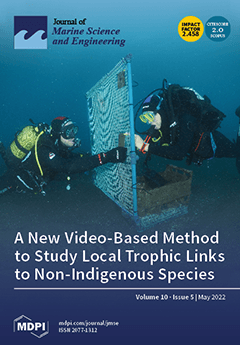This study aimed to investigate the effects of dietary natural feed supplement on the growth performance, non-specific responses, and disease resistance in
Lates calcarifer. Three commercial products (A, B, and C) containing a basal probiotic mixture were tested. Product A contained a
[...] Read more.
This study aimed to investigate the effects of dietary natural feed supplement on the growth performance, non-specific responses, and disease resistance in
Lates calcarifer. Three commercial products (A, B, and C) containing a basal probiotic mixture were tested. Product A contained a basal mixture of
Paenibacillus sp.,
Bacillus subtilis,
Bacillus amyloliquefaciens, and
Lactobacillus rhamnosus (10
7 cfu/g for each probiotic); product B contained additional
Lactobacillus plantarum (10
10 cfu/g); and product C contained additional soybean peptides (500 g/kg) and garlic powder (1 g/kg). Each product was supplemented into subject diets at dosages of 1 or 2 g/kg (designated as the A1, A2, B1, B2, C1, and C2 groups, respectively). Following an eight-week trial, growth parameters (specific growth rate and feed conversion ratio), non-specific immune responses (O
2− production, phagocytic rate, and phagocytic index), and the results of a challenge test against
Vibrio alginolyticus were evaluated. The results show that all probiotic supplement groups exhibited an improvement in growth performance compared to the control group (non-probiotic diet). In terms of non-specific immunity parameters, a significant improvement in O
2− production was found in the C2 group, whereas significant improvements in phagocytic activity were found in all the B and C groups. The C2 group displayed optimal O
2− production, phagocytic rate, and phagocytic index results. For the challenge test, the C groups showed higher
Vibrio resistance than the other experimental groups and the control group. These results suggest that product C, given at dosages of 2 g/kg, may serve as a growth-promoting and immunostimulatory additive for the cultivation of Asian seabass.
Full article





